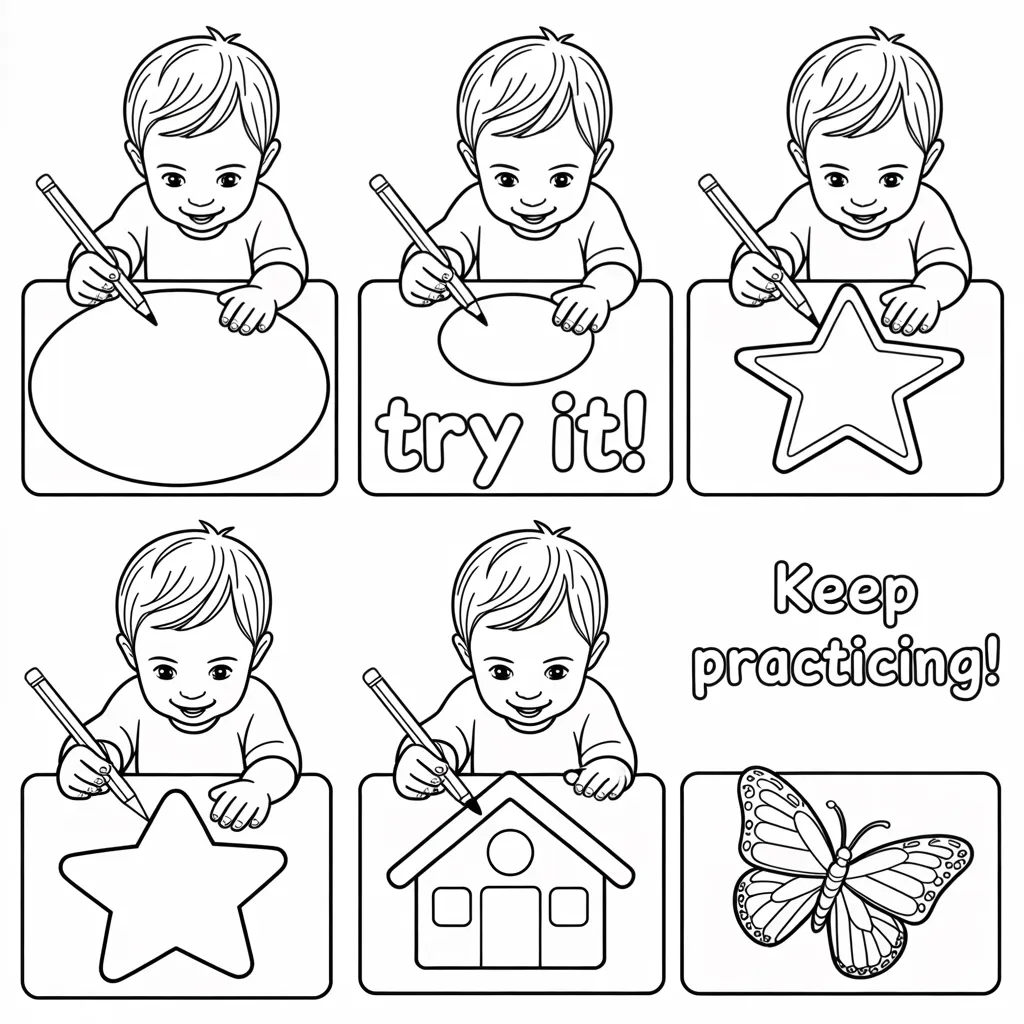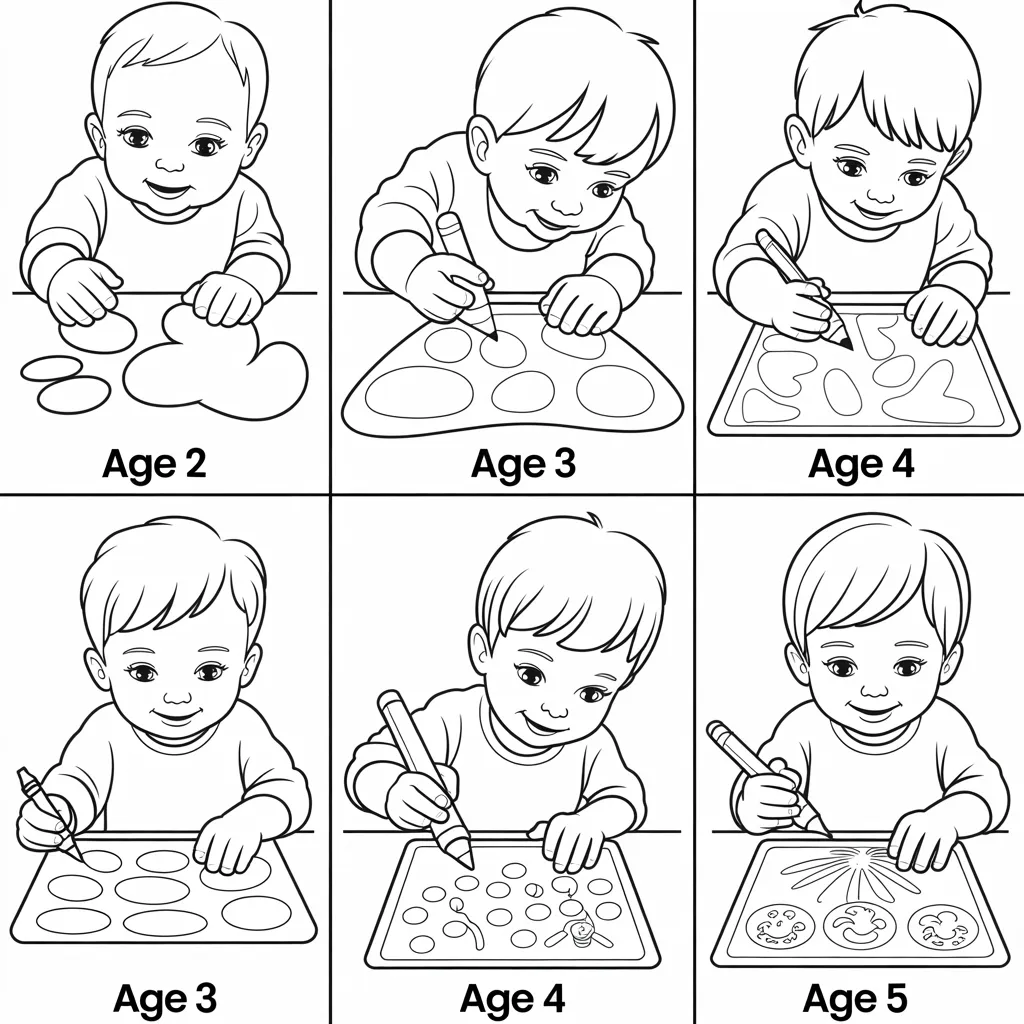Coloring activities represent one of the most versatile and accessible learning tools available for preschool children. These simple yet powerful experiences go far beyond mere entertainment, serving as foundational building blocks for cognitive development, self-expression, and early academic skills. When thoughtfully implemented, coloring activities preschool educators and parents provide can transform ordinary moments into rich learning opportunities that engage young minds while developing crucial fine motor abilities. As young children grasp crayons and markers with determined concentration, they’re simultaneously strengthening the muscles needed for writing, enhancing hand-eye coordination, and experiencing the joy of creative expression – all within the comforting structure of an activity that feels like play rather than formal learning.

The Developmental Benefits of Coloring Activities Preschool Children Need
The simple act of coloring offers remarkable developmental advantages that support whole-child growth during the critical preschool years.
Physical Development Through Coloring Activities Preschool
The physical benefits of coloring extend far beyond keeping little hands busy:
- Fine Motor Skill Development: Grasping writing tools and controlling small movements strengthens the same muscles needed for buttoning clothes, using scissors, and eventually writing.
- Hand-Eye Coordination Enhancement: Staying within lines and making intentional marks requires children to coordinate what their eyes see with how their hands move.
- Proper Grip Development: Regular coloring practice helps children naturally develop the tripod grip needed for efficient handwriting.
- Bilateral Coordination: Coloring tasks often require using both hands simultaneously – one to hold the paper steady while the other colors.
- Muscle Endurance: Extended coloring sessions build stamina in small hand muscles that tire easily in young children.
Cognitive Growth from Coloring Activities Preschool
Beyond physical benefits, coloring offers significant cognitive advantages:
- Color Recognition and Discrimination: Children learn to identify, name, and distinguish between different colors and shades.
- Shape Recognition: Coloring pages featuring geometric shapes help children recognize and understand fundamental forms.
- Spatial Awareness: Understanding how to navigate the boundaries of a coloring page builds awareness of space and position.
- Pattern Recognition: Many coloring activities introduce repeating elements that help children identify and create patterns.
- Decision Making Skills: Choosing colors and deciding which areas to color first develops early executive function.
Emotional and Social Benefits of Coloring Activities Preschool
The psychological benefits of coloring are equally valuable:
- Stress Reduction: The rhythmic, repetitive nature of coloring has a calming effect similar to meditation.
- Emotional Expression: Children can express feelings through color choices and intensity of application.
- Confidence Building: Completing a coloring page provides a sense of accomplishment and pride.
- Focus and Attention Development: Coloring naturally encourages extended concentration on a single task.
- Creativity Cultivation: Even within the structure of a pre-drawn image, children make creative choices.

10 Essential Coloring Activities Preschool Teachers Recommend

Educators consistently identify these coloring experiences as particularly valuable for young learners:
1. Themed Color Matching Activities
Provide coloring sheets with simple outlines where each section contains a small colored dot. Children must match their crayon color to the dot, strengthening color recognition and following directions. Start with primary colors and gradually introduce more complex shades.
2. Sensory-Enhanced Coloring Experiences
Transform ordinary coloring by adding sensory elements – sprinkle sand on glue lines to create textured boundaries, use scented markers, or incorporate finger paint for tactile feedback. These multi-sensory coloring activities preschool children find irresistible help integrate multiple developmental domains simultaneously.
3. Process-Focused Color Exploration
Instead of emphasizing staying within lines, occasionally offer open-ended coloring experiences where children explore color mixing, layering, and blending. Provide watercolor paints alongside crayons to discover how colors interact when combined.
4. Nature-Based Coloring Adventures
Take coloring outdoors by placing paper over tree bark, leaves, or sidewalk textures and creating rubbings with the side of unwrapped crayons. This nature-connected activity builds appreciation for patterns while developing proper crayon grip.
5. Collaborative Mural Coloring Projects
Create oversized outlines on butcher paper where multiple children work together to complete a unified image. This social approach to coloring teaches cooperation, communication, and respect for others’ creative choices.
6. Story-Connected Coloring Experiences
After reading a picture book, provide related coloring pages to extend the story experience. Ask open-ended questions about color choices – « Why did you make the bear brown instead of purple? » – to connect coloring with literacy and critical thinking.
7. Science-Integrated Coloring Discoveries
Introduce color-changing activities using white crayons on white paper, followed by watercolor wash revealing the « invisible » drawings. This magical experience introduces basic scientific principles while delighting young colorists.
8. Math-Infused Coloring Challenges
Incorporate simple counting and pattern activities with instructions like « Color three apples red and two apples green » or « Create a red-blue-yellow pattern with the flowers. » These activities build early numeracy within engaging coloring contexts.
9. Letter and Number Recognition Coloring
Utilize alphabet and number coloring sheets with additional sorting components – « Color all the letter A’s blue » or « Find and color all the number 5’s orange. » This targeted approach reinforces academic content through enjoyable coloring activities.
10. Self-Portrait Coloring Opportunities
Provide simple face outlines and encourage children to color themselves, promoting self-awareness and identity development. Extend the activity by discussing similarities and differences between everyone’s completed portraits.
Creative Materials for Coloring Activities Preschool Children Love

Expand beyond basic crayons to maintain interest and develop different skills:
Traditional Coloring Tools with Developmental Benefits
- Jumbo Crayons: Perfect for beginners still developing grip strength
- Triangular Crayons: Naturally encourage proper tripod grip
- Washable Markers: Provide more immediate color feedback than crayons
- Colored Pencils: Require more pressure, building hand strength
- Watercolor Paints: Introduce cause-effect relationships and color blending
Unconventional Coloring Materials for Sensory Exploration
- Finger Paints: Eliminate tools entirely for direct sensory feedback
- Pudding or Yogurt with Food Coloring: Edible coloring mediums for multi-sensory play
- Sidewalk Chalk: Large-scale outdoor coloring that develops gross motor skills alongside fine motor control
- Color Wonder Products: Mess-free options that only appear on special paper
- Natural Materials: Berry juice, turmeric water, or beet dye for nature-based coloring
How to Implement Effective Coloring Activities Preschool Children Respond To
The approach to coloring significantly impacts its developmental value:
Setting Up Success-Oriented Coloring Environments
- Proper Seating: Ensure feet are flat on the floor with tables at elbow height
- Good Lighting: Position light sources to avoid shadows on work areas
- Distraction Minimization: Create a calm space dedicated to focused coloring
- Time Consideration: Schedule coloring when children are alert, not tired or hungry
- Clear Boundaries: Establish that coloring happens on paper, not walls or furniture
Supportive Adult Interactions During Coloring Time
- Process Praise: Comment on effort rather than results – « You’re using so many different colors! » instead of « That’s so pretty! »
- Open-Ended Questions: Ask « Tell me about what you’re coloring » rather than making assumptions
- Specific Observations: Notice details – « I see you made the sun yellow and the clouds blue »
- Encouraging Independence: Resist the urge to « fix » or direct children’s coloring choices
- Expanding Vocabulary: Introduce words like « shade, » « bright, » « pale, » or « outline » during coloring conversations
Conclusion
Coloring activities preschool children engage in represent far more than simple busy work – they are powerful developmental tools that support physical, cognitive, and emotional growth during critical formative years. By thoughtfully implementing varied coloring experiences that incorporate different materials, themes, and approaches, parents and educators provide young children with enjoyable opportunities to build essential skills that will serve them throughout their educational journey. The humble crayon, when placed in a preschooler’s hand within the context of engaging, developmentally appropriate activities, becomes an instrument of discovery, self-expression, and foundational learning. As you introduce these coloring experiences, remember that the greatest value lies not in picture-perfect results but in the rich developmental processes occurring as young children explore, create, and grow through the simple joy of coloring.
Educational Coloring Sheets: 25 Powerful Learning Tools for Classroom and Home
FAQ About Coloring Activities Preschool
How long should preschoolers spend on coloring activities?
Appropriate coloring session length varies considerably based on individual children’s interests and developmental stages. For most 3-5 year olds, 10-15 minutes represents a realistic attention span for focused coloring. However, highly engaged children might happily color for 20-30 minutes. Rather than setting strict time limits, observe engagement cues – when a child begins to show restlessness, decreased attention, or frustration, it’s time to transition to a new activity. Some children may return to coloring activities multiple times throughout the day, which is perfectly appropriate as long as interest remains genuine.
Should I be concerned if my preschooler refuses to stay within the lines?
Absolutely not! Developmental readiness for coloring within lines typically emerges between ages 3-5, with many children not mastering this skill until closer to kindergarten. The ability to stay within boundaries requires fine motor control, visual perception skills, and attention regulation that develop gradually. Rather than emphasizing neat coloring, value your child’s experimentation and enjoyment of the process. Provide a mix of structured coloring pages and blank paper, allowing for both types of expression. If a child shows interest in developing more precise coloring, offer supportive strategies like starting with simpler images featuring larger spaces and thicker lines.
What should I do when preschoolers want to color everything the « wrong » color?
Embrace their creative choices! There’s tremendous value in allowing children to make independent decisions about colors, even when they don’t match reality. A purple sun or blue dog represents creative thinking and personal expression rather than a mistake. If you’re concerned about color recognition, simply acknowledge their choice while providing information: « You made the elephant pink! That’s an interesting choice. Elephants we see at the zoo are usually gray, but it’s fun to imagine a pink one! » This approach respects creativity while subtly reinforcing color knowledge without correction.
How can I help a preschooler who gets frustrated with coloring?
Children who become easily frustrated during coloring may be experiencing challenges with fine motor skills or perfectionist tendencies. Support these children by starting with success-oriented activities like coloring on larger paper with simplified images and thick boundaries. Provide adaptive tools like triangular crayons or crayon grips that make holding easier. Break down the task by suggesting coloring just one small section initially, celebrating that accomplishment before moving on. Model your own imperfect coloring efforts, verbalizing that coloring is about enjoying the process, not creating perfect pictures. If frustration persists, temporarily shift to alternative fine motor activities like playdough or bead stringing before reintroducing coloring gradually.
Are digital coloring apps valuable for preschoolers?
Digital coloring apps can complement traditional coloring experiences but shouldn’t replace hands-on coloring with physical materials. While quality apps offer benefits like no-mess convenience, engaging features, and instant results that build confidence, they don’t develop the same crucial fine motor skills as physical coloring. The ideal approach combines both: use traditional coloring for fine motor development, sensory feedback, and proper grasp patterns, while occasionally incorporating high-quality digital options that minimize ads and in-app purchases. When using digital coloring, maintain the same supportive interactions you would during traditional coloring – ask questions, discuss choices, and focus on the process rather than just rapid completion.
